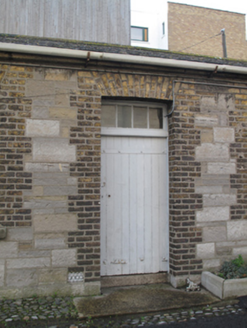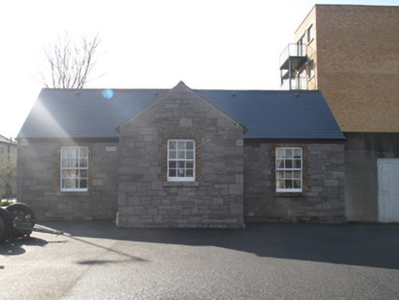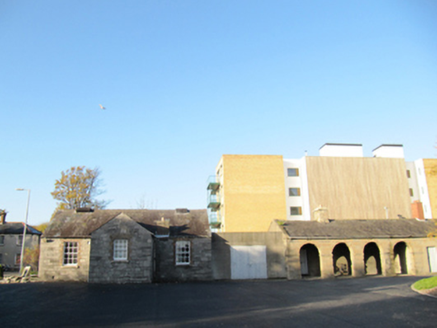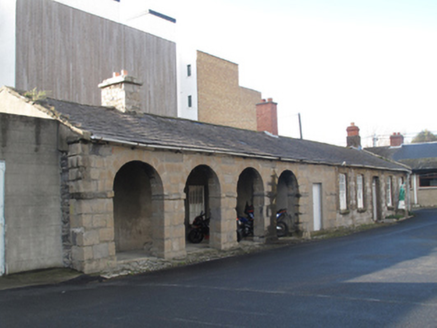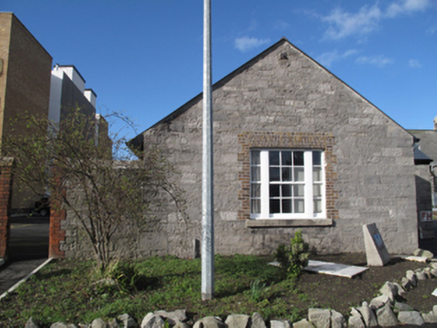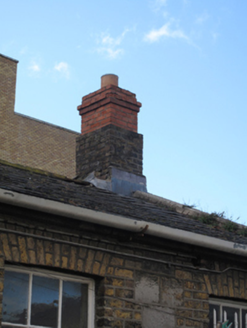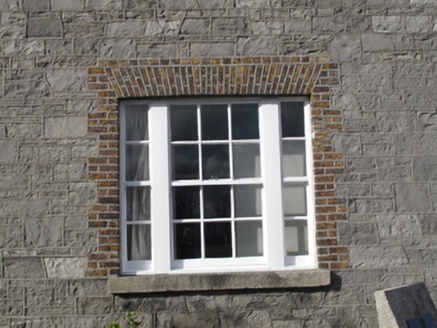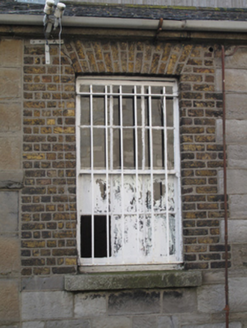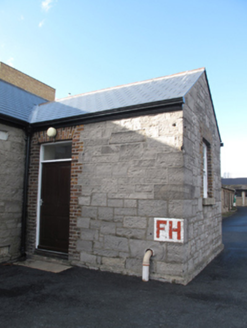Survey Data
Reg No
50081008
Rating
Regional
Categories of Special Interest
Architectural, Social
Previous Name
Portobello Barracks
Original Use
School
Date
1850 - 1870
Coordinates
315171, 232333
Date Recorded
18/11/2013
Date Updated
--/--/--
Description
Attached three-bay single-storey former school, built c.1860, having central gable-fronted porch to front (east) elevation, and recent flat-roofed block linking to multiple-bay single-storey block to north, built c.1820. Pitched slate roof with cast-iron rainwater goods, raised vents, and yellow brick chimneystack. Snecked calp limestone walls. Square-headed window openings with granite sills, yellow brick block-and-start surrounds and six-over-six pane timber sash windows. Tripartite timber sash window to south elevation. Square-headed door opening to south elevation of porch, having timber panelled door. Single-storey arcaded block to north having pitched slate roof with yellow and red brick chimneystacks, granite coping and cast-iron rainwater goods. Cut sandstone piers and voussoirs to round-headed arcade arches, having carved impost course. Square-headed door and window openings to corridor to interior, having timber battened doors and timber sash windows. Square-headed door opening to front, with timber battened door.
Appraisal
Portobello Barracks was constructed at the beginning of the nineteenth century as a cavalry barracks. It was taken over by Irish troops in 1922, and became the Headquarters of the National Army, under the leadership of Michael Collins. In 1952, it was renamed after Cathal Brugha, Chief of Staff of the Irish Republican Army during the War of Independence, and Minister for Defence in the first Dáil. This modestly-scaled building with its domestic proportions provides a pleasing contrast to the large ranges which dominate the complex. It retains much of its early form, fabric and character, and the well-executed stonemasonry is typical of contemporary military buildings. It served as an infants' school for the children of officers who resided in the barracks, and extended the adjacent earlier, arcaded school.
